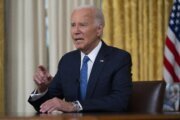Borrowers need to know and do some critical things before the pandemic-related pause on repaying federal student loans ends this year and payments resume in January 2023.
Student loan and finance experts advise taking the following steps right away:
— Update your contact information with your student loan servicer so that you don’t miss important updates.
— Get precise information about your next payment, including due date, interest rate and payment amount.
— Make sure you are on the best repayment plan, since there are numerous options.
— Continue or start saving money specifically for your student loan payments.
— Explore ways to increase your income and reduce expenses if you anticipate difficulty making payments.
— Understand the negative consequences of failing to make loan payments, since delinquency can lead to default and repercussions such as a hit to your credit score and income tax and wage garnishment.
[READ: Understand Federal Student Loan Wage Garnishment.]
“Consider paying off any accrued interest that may capitalize before the loan returns to an active repayment status,” Alex Ricci, director of government affairs and communications at the Education Finance Council, a D.C.-based national trade association representing nonprofit and state-based higher education finance organizations, wrote in an email. “If possible, start setting aside part of every paycheck to give yourself financial wiggle room when repayment resumes.”
The administrative forbearance period began in March 2020. The original coronavirus emergency relief bill, the CARES Act, was signed into law by former President Donald Trump on March 27, 2020. It temporarily paused payments and involuntary collections on most federally held student loans through Sept. 30, 2020.
The pause was extended seven times, the last five times by President Joe Biden, whose Department of Education has indicated that the current extension will be the last. Biden also announced in August that up to $10,000 in federal student loan debt will be canceled for qualifying borrowers, and up to $20,000 will be canceled for eligible borrowers who received a Pell Grant in college.
The millions of borrowers who will still have federal student loan debt in January should immediately start planning for repayment, recommends Shelton W. Dotson IV, a financial advisor for Northwestern Mutual in Texas.
Communicate With Your Student Loan Servicer
“Definitely have a conversation with your servicer whether it’s online, on a chat message or on the phone,” Dotson says.
“Before the repayment starts, I would recommend talking to the loan servicer so they can at least see what payment strategy may work best,” he says. “Make sure you know what your payments will look like. People’s payments before the pandemic will look a lot different than their payments after the pandemic, more than likely. … Of course, there was no interest being accrued, but that previous plan may be different with a new company.”
Students who took out federal student loans more than once may have two or more servicers, and it’s important to communicate with each, experts say.
Borrowers with disposable savings should ask their servicer if there are other options to make a lump sum payment toward a loan’s principal balance, Ricci says.
“Reducing your outstanding principal will help you pay off your loans faster,” he points out. “For borrowers who are worried about affording monthly payments, ask your servicer about different repayment plans you may be eligible for to reduce your monthly billing statement. For borrowers looking to qualify for PSLF (Public Service Loan Forgiveness), make sure you are enrolled in an income-driven repayment plan that fits your needs.”
[READ: 7 Tips to Pay Off Multiple Student Loans]
About 45 million Americans of varying ages owe federal student loans, but the advice from experts applies across generations. Jean Chatzky, a finance counselor and founder and CEO of the multimedia company HerMoney, offers tips in a video for the American Association of Retired Persons, commonly known as AARP.
“First, mark the (payment) date on your calendar,” she advises. “Next, look for notifications from your loan servicer. You should hear from your servicer 30 days prior to your first payment to let you know when exactly your payments will resume. But as we get closer, if you still haven’t heard from your servicer, then it’s best to contact them directly to get your new schedule. And if you moved during the pandemic like so many people did, take a moment to update your address and contact information.”
Start Saving for Repayment
Borrowers would be wise to begin now to save money toward future monthly student loan payments, experts say.
“If they have any disposable income, start to set money aside,” Dotson says. “That would be a great way for them to start planning for that amount to come out of their monthly budget already. They can at least put it in an account.”
Ricci recommends making sure you’re enrolled in a repayment plan that fits your monthly budget and long-term goals.
“This is a good step for all borrowers, but it is especially critical for borrowers who have a new loan servicer, who are working towards Public Service Loan Forgiveness, or who were enrolled in an income-driven repayment plan before the payment pause,” he says. “Any income changes you experienced during the pandemic could have a huge impact on how much you owe each month.”
Dotson offers another suggestion to borrowers to get on the right track early: “A month or two weeks before payments resume, set up an autopay and make sure everything is set.”
Ricci notes at least one financial benefit for federal student loan borrowers who set up autopay. “Federal student loans are eligible for a 0.25 percent interest rate discount once a borrower signs up for automatic payments,” he says. “This could save individuals hundreds of dollars over the repayment term of the loan.”
Devise a Strategy if You Anticipate Difficulty Repaying
For borrowers struggling with financial difficulty and concerned that they may be unable to keep up with payments, experts recommend contacting the loan servicer and asking about repayment plans that are adjusted to fit income. Income-driven repayment plans cap monthly payments based on your income and family size, which can allow for smaller payments.
Some borrowers may find that under an IDR plan, they qualify for potentially no payment or a very small, more manageable amount. However, a trade-off is that such a plan usually extends the length of repayment, costing more in the long run because of interest, experts note.
[Read: Create a Student Loan Repayment Plan: 9 Tips]
Before looking into an IDR plan, borrowers should find out if they’re eligible for the time-limited PSLF rules waiver that ends Oct. 31, 2022, per the Biden administration’s Student Debt Relief Plan, and cancellation of up to $20,000 in federal student loans under that plan for qualifying borrowers.
Additionally, “if you were in default prior to the pause, you are likely eligible for the ‘fresh start’ program. This program allows borrowers to get back into good standing,” Michele Streeter Shepard, senior director of college affordability at The Institute for College Access & Success, a nonprofit organization that conducts research, analysis and advocacy on making higher education more available, affordable and equitable, wrote in an email.
Dotson suggests checking with your employer to see if there are any benefits for student loan repayment or helping to pay for school. “Some jobs do a reimbursement plan if you’ve been there a certain amount of time,” he says. “Some companies are willing to assist you with that.”
Aside from some federal programs that provide federal student loan forgiveness after 10 years of qualifying payments, it’s extremely hard to get rid of federal student loans without fully repaying them — even in bankruptcy. Dotson recommends that borrowers already in bankruptcy seek relief by talking to the court that handled their bankruptcy case.
“It depends on when that debt was taken,” Dotson says.
If a borrower has already filed for bankruptcy for a reason other than student loan debt, “that’s one thing,” he says. “But you don’t want to file bankruptcy for student loans, because the government and its servicers are generally flexible. They could just take a percentage or utilize income-based planning to take care of that.”
An IDR plan may be best for borrowers whose jobs qualify for PSLF, Dotson says. “Others who don’t get any forgiveness, it might be best for a standard plan,” he says.
Borrowers currently under an IDR plan should check their income recertification date, which was postponed as part of the repayment pause, Shepard says, adding that borrowers will be notified of their new recertification date before it is time to recertify.
Also, if income has changed significantly for these borrowers, they should update their information with their loan servicer “and get a new payment amount based on their current income,” Shepard says. This can be done at StudentAid.gov/IDR.
“After the pause ends, monthly payments will resume at this new amount,” Shepard says.
Borrowers already in an IDR plan who recently got married or had a child also can request that their payment be recalculated.
“Income-driven repayment plans are a struggling borrower’s best option for long-term relief because you never have to pay more than 10 or 15 percent of your discretionary income,” Ricci says. “Borrowers experiencing short-term or temporary setbacks may be able to access an economic hardship deferment that will allow them to continue deferring monthly payments and interest accumulation.”
However, requesting another deferment or forbearance should be a last resort, experts say, since interest will continue to accrue on your student loans and you will end up owing more money over time.
Details and updates about student loan repayment, forbearance and other information are available at StudentAid.gov.
More from U.S. News
Understanding the Types of Federal Student Loans Available
Tips for Successfully Making Extra Student Loan Payments
14 Terms You Need to Know Before Repaying Your Student Loans
The COVID Student Loan Repayment Pause Is Ending: What Borrowers Should Do Now originally appeared on usnews.com







